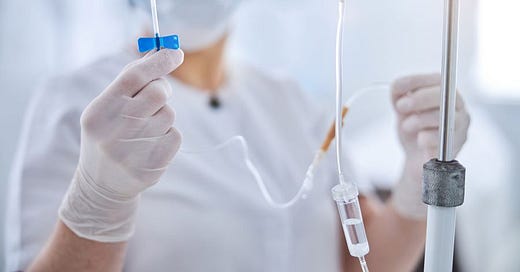Suppose you have a patient with a urinary tract infection. Standard practice dictates that you treat based on symptoms whilst also ensuring that you send a sample. Upon doing so, the results would normally read as:
Urine microscopy & culture
Leukocytes 24 x 10^6/L(<10 x 10^6/L)
Erythrocytes < 10 x 10^6/L
Culture: e-coli
R - Trimethoprim
R - Amoxicillin
S - Nitrofurantoin.
So what would you do? Most clinicians would check what antibiotics they are on for their infection and if they are on either trimethoprim or amoxicillin, they would change this to nitrofurantoin. Straight forward right?
It now gets a little complicated. The European Committee on Antimicrobial Susceptibility (EUCAS) has now introduced an important, third category. This is “susceptible but requires exposure to antibiotics” (abbreviated as ‘I’).
Most of our reports will start to reflect this change but the question is, why this sudden update? The answer lies in antimicrobial resistance.
Bacteria are getting more tricker to deal with. Millions of deaths worldwide are linked to antimicrobial resistance and I don’t just mean MRSA and ESBL here. Resistant organisms include klebsiella, e.coli and others. Think about your own practice - patients with repeat UTIs, the chest infection that just doesn’t go away or the cellulitis which requires multiple doses of antibiotics.
This guidance means that certain changes need to be made to the standard antibiotic regimen and such guidance will translate into local guidance over time. It might mean
Suspending the use of broad-spectrum antibiotics for certain organisms
Using higher doses of antibiotics
Administering antibiotics more frequently
Introducing an “add-on” antibiotic
Prescribing an increased course of antibiotics
Delaying IV to oral switch
This should highlight to us that we need to be extra careful when clinically assessing patients and deciding whether or not to prescribe antibiotics. The new guidance is a further illustration of antibiotic overuse and we should be aware of any new guidance concerning antibiotic use. Here are some examples that are already in practice
Administering Tazocin FOUR times a day and with an extended infusion (3-4 hours) for patients with pseudomonas infections.
Penicillin AND gentamicin for infective endocarditis,
Amoxicillin 1g TDS for moderate-severe pneumonia,
Ciprofloxacin 750mg BD for salmonella (vs 500mg BD)
Be sure to stay up to date with your local/hospital guidance so you can continue to provide the best treatment to your patients!
Until next time..
FREE CPD for Physician Associate Students (F2F) in Yorkshire
Our very own Kam is organising a FREE regional CPD event in Bradford Royal Infirmary on Thursday 17th July 2025. It is a day packed with lectures covering gastroenterology, elderly medicine, stroke and other subject areas. Designed with qualified and student PAs in mind, this event is sure to be a great day of CPD, networking and a certificate for your portfolios.
For those who are interested, click on the following link for more information.
FREE Haemoglobin Blood Interpretation Video
Check out our latest video covering haemoglobin blood interpretation with a specific focus on anaemia. We know how tough it can be differentiating between the various types of anaemia. It is for this reason we have carefully scripted and presenting this video with some useful case examples to help consolidate key concepts.
Be sure to check it out below
Website: www.paretoeducation.co.uk
Instagram: www.instagram.com/pareto_ed
Twitter: www.twitter.com/pareto_ed
Youtube: https://bit.ly/3DPm23c
Email: info@paretoeducation.co.uk






